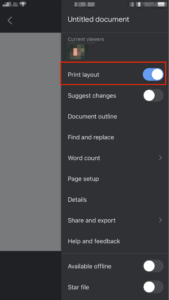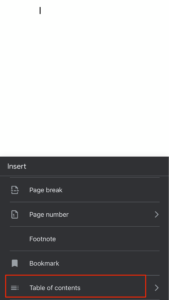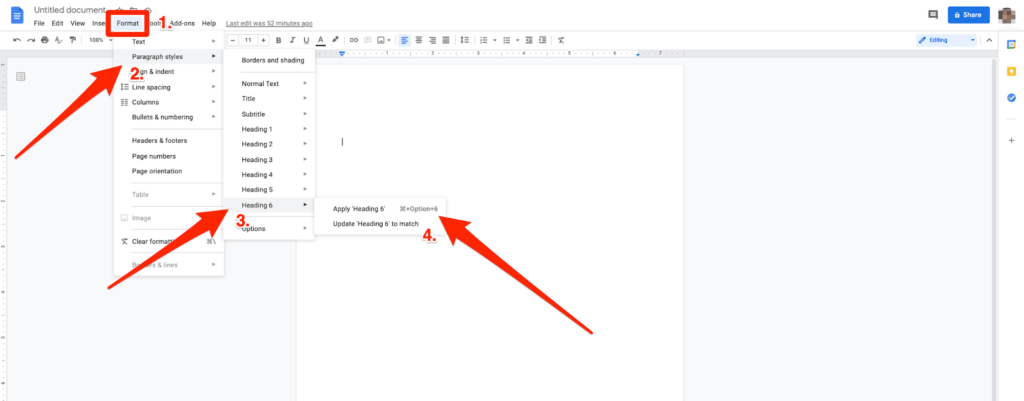How to Add a Table of Contents to Google Docs
Google Docs is the go-to tool for people when it comes to creating documentation. Businesses use it for creating text-based documents, students use it for writing dissertations, and authors use it for writing their novels.
Irrespective of your purpose, adding a table of contents to your document can be a super convenient way to guide readers through the Doc. Even navigation becomes easier as you can add links to the table, letting you jump to specific parts of your document within seconds.
You might think that creating a table of contents in a Google Document is time-consuming. The reality, however, couldn’t be more different.
Read on as we show you how you can insert a table of contents into your document, along with tips to format and update it.
How to Add a Table of Contents to a Google Docs Document
In this section, we’ll give you a step-by-step walkthrough of how to add a table of content in a doc.
Let’s begin, shall we?
Step #1 – Open a fresh document in Google Docs.
Step #2 – Place your cursor where you want to add the table of contents.

Step #3 – Click on Insert located on the top menu bar.

Step #4 – Select the table of contents from the drop-down menu. You’ll see two options here:
- With Page Numbers: The first option is to have a number table of contents
- With Blue Links: The second option is to have a table of content that includes blue links.
You can choose one that suits your needs best. We’ll discuss the difference between the two later on in the article.

Step #5 – Your table of contents will appear in the format you choose.

That’s it! This is really all you need to do to include a table of contents within your document.
If you want to delete a table of contents, all you need to do is right-click on it. Select Delete table of contents from the dropdown menu, and you’ll have it gone.

Image Source: Lifewire
How to Edit or Update a Table of Contents in Google Docs
It’s possible that you might want to add another section to your Google Docs document. If so, you will have to update your table of contents accordingly to avoid confusing the reader.
Here’s how you do it:
Step #1 – Open the document in Google Docs.
Step #2 – To add a heading in the document, type out the word, and then highlight it.
If you want to remove an item from your table of contents, locate the headings that you want to remove in the document. Highlight it, and then press the Delete button on your keyboard.
Step #3 – Click on the drop-down arrow next to Normal text from the top menu bar.

From there, select Heading 1, Heading 2, or Heading 3 — this depends on the format you chose before when making the table of contents.
Step #4 – At this point, you can create as many headers as you want. Once you’re done, click inside the table of contents.
Step #5 – Click on the Refresh icon located just beside the headings. You can also right-click the tables of content and select Update table of contents from the displayed options.

Image Source: Groovy Post
This will automatically update all changes made to your table of content, adding all the new headings immediately.
How to Make a Table of Contents in Google Docs for iOS
You can add and edit a table of contents in Google Docs on your iOS — iPhone or iPad — device. All you need to do is follow the steps below:
Step #1 – Open a document in Google Docs. Tap on the Edit icon on the bottom right corner of your screen.

Step #2 – Tap on the menu bar (this is denoted by three horizontal dots) on the top right-hand side of your screen.
Step #3 – Toggle on Print Layout if it isn’t already enabled.

Add headings to your document wherever you may like, and then tap on the Formatting icon located in the top right-hand corner.
Step #4 – Tap on Style in the Text field. Select from Heading 1 to 6.

Step #5 – Tap on the back arrow and then proceed to tap anywhere on your screen. This will exit formatting automatically.
Step #6 – Tap on the location where you want to place your table of contents. At the top right-hand corner of your screen, tap again on the + sign.
Step #7 – Tap on the Table of contents and then choose how you want it to look. Again, your options are between a numbered list and blue links.

Your table of contents will now appear in your chosen format on your iOS device.
How to Make a Table of Contents in Google Docs for Android
Unfortunately, you cannot add a table of contents on the Android version of Google Docs. You can, however, add and delete headers in the app if needed.
The Most Important Table of Content Settings in Google Docs
Under this section, we’ll discuss the different settings available to customize your table of contents in a Google Docs document.
Let’s take a quick look.
Setting #1: Heading Styles
If you want to change the heading of your table of content, all you need to do is click on the Styles list drop-down arrow.
You currently have three options:
- Heading 1
- Heading 2
- Heading 3
As one would expect, the sizes of these headers change in descending order. In other words, Heading 1 is bigger than Heading 2, and Heading 2 is bigger than Heading 3.

Setting #2: Paragraph Styles
If you want to add additional levels of headings, instead of selecting the heading from the Styles list, you’ll have to use the Format menu instead.
Click on the Format tab from the top menu bar and select Paragraph Styles. From the pop-out menu, choose the headings from level 1 to level 6, followed by clicking on Apply.
For instance, if you want to select Headings 6, choose that, and then click on Apply ‘Heading 6.’

Setting #3: Page Numbers vs. Blue Links Table of Content Style
As mentioned before, when you select the table of contents from the insert menu, you’ll see two options: one is the Page Number style, and the other is the Blue Link style.
As the name indicates, the Page Number format shows the exact page where you’ll find the intended topic in the Google Docs document.
As for Blue Links, you’ll automatically be directed to the specific section once you click on the particular link.
The Bottom Line
Adding a table of contents makes sense when you create or write a very long document.
It becomes easier for the reader and even you to navigate through the document by directly jumping to the different sections. As a result, you won’t have to waste time scrolling through the different pages to read a particular section.
Moreover, adding a table of contents also has an aesthetic advantage. It provides structure to the document, while simultaneously giving it a more professional appearance.
It’s a win-win situation for you either way.

